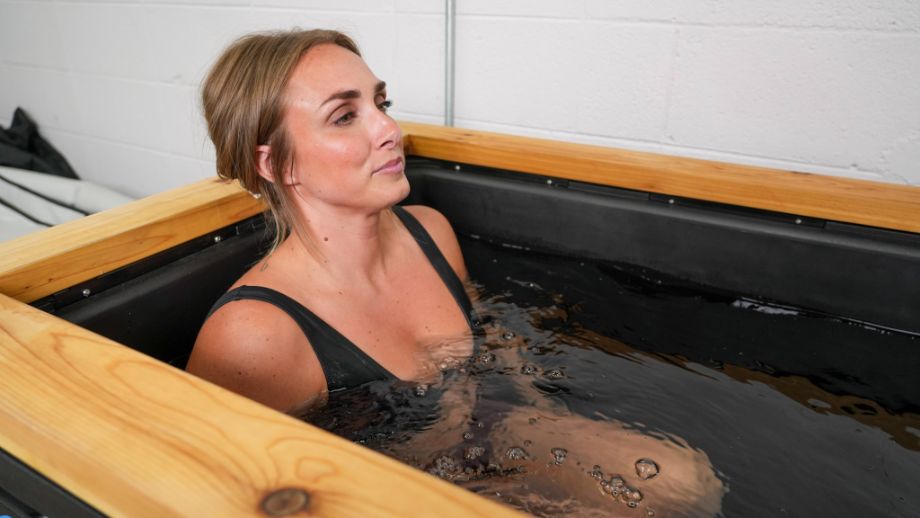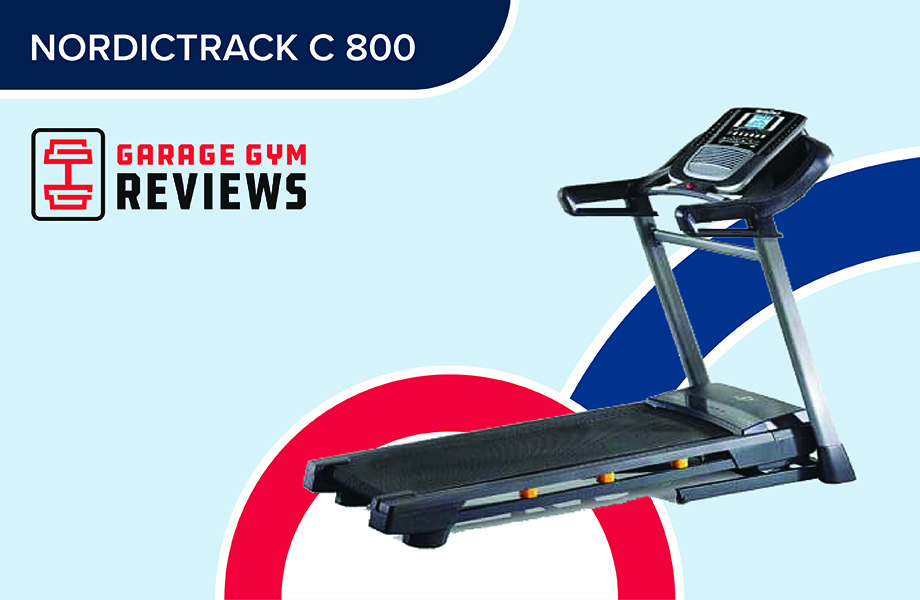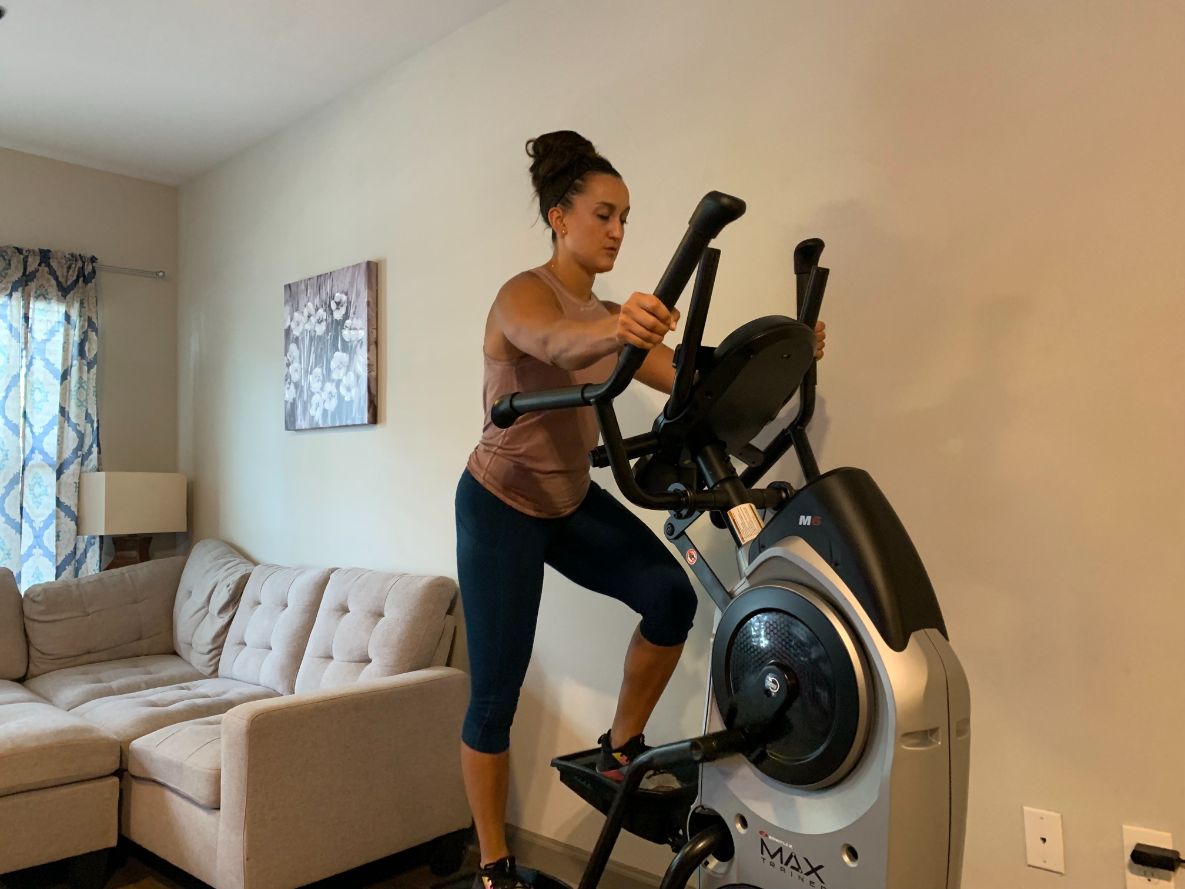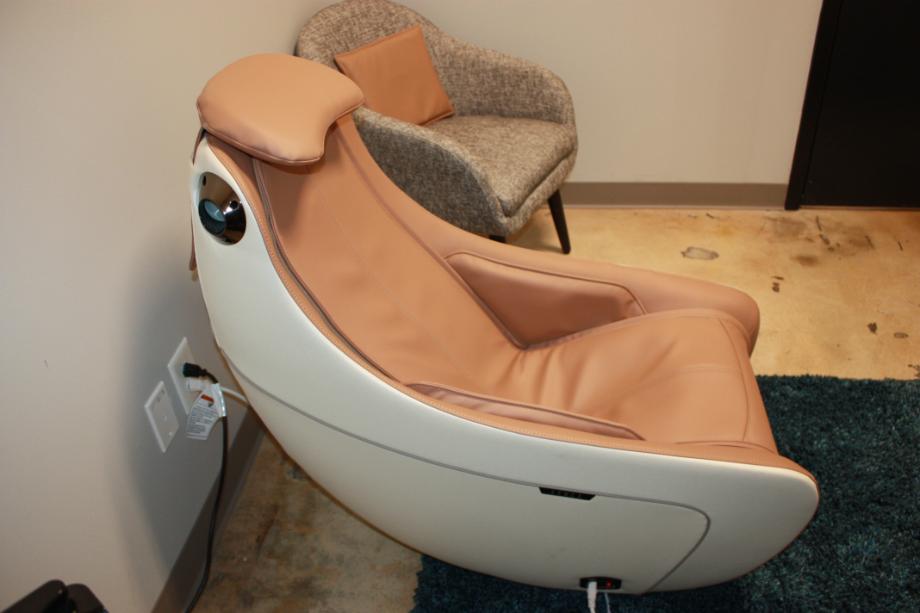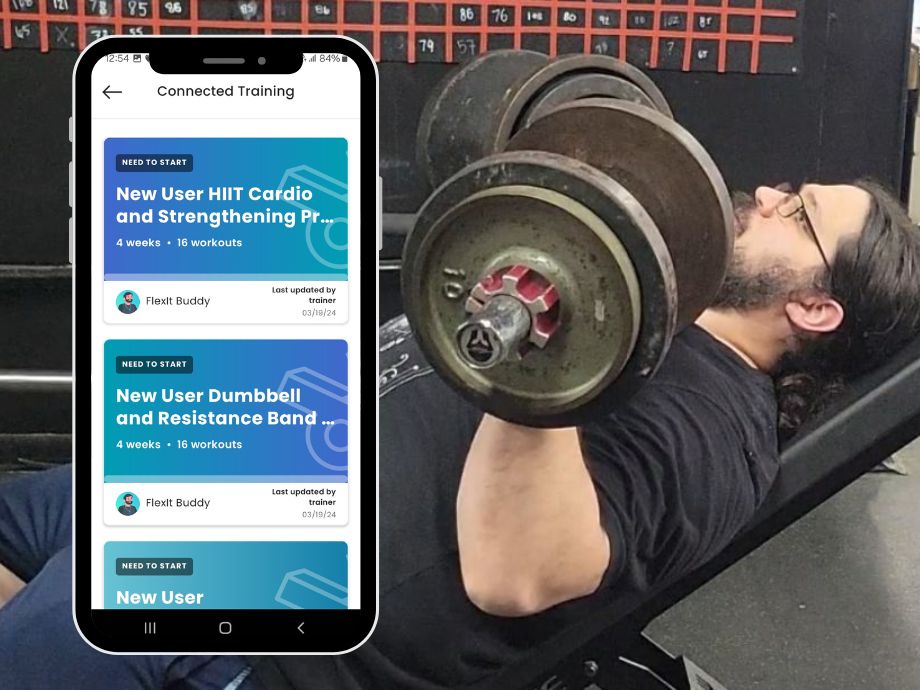The internet hype around cold plunges and ice baths is palpable these days. Everyone and their mom is plunging into cold water to reap the potential benefits of faster workout recovery, overall wellbeing benefits, and potential for mental clarity.
But if you’re on the fence about investing in one of the best cold plunge tubs on the market (or creating a DIY version), why not start with cold showers? The ice bath vs cold shower debate might turn some folks on their heads, but it’s worth exploring the differences and seeing which option is best for you right now.
Medical disclaimer: This article is intended for educational and informational purposes only. It is not intended as a substitute for medical advice. For health advice, contact a licensed healthcare provider.
Quick Look At General Cold Water Exposure
Before we start looking at the details and health benefits of cold water therapy, you should know that research on general cold water exposure is fairly limited and relatively recent within the last decade or so. On top of that, there are even fewer studies looking into cold showers versus whole-body cold water immersion therapy.
RELATED: The Cold Plunge Review
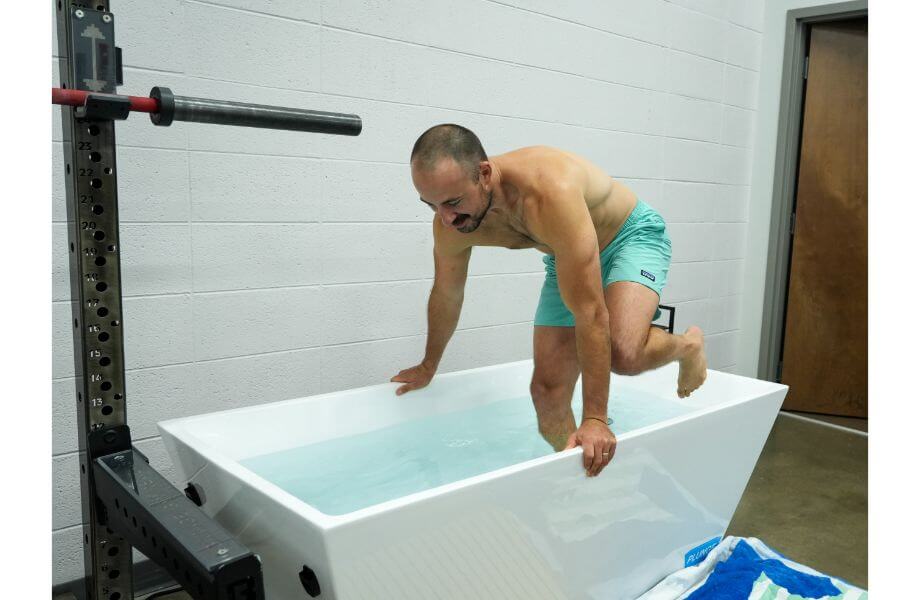
However, the Wim Hof Method, created by a Dutchman named Wim Hof (aka the Iceman), introduces his students to cold water exposure with tactics like taking a one-minute cold shower at the end of your regular warm shower. Essentially, this tactic can lead to longer plunge times, colder temperatures, and, eventually, full-body immersion.
All that said, there are four main physiological responses that occur when you’re voluntarily exposed to cold water, which is discussed in a 2022 review published by the International Journal of Circumpolar Health1 and outlined below:
- Thermoregulation: Your body’s natural response to cold environments. Your body begins to increase blood flow to your vital organs by dilating certain blood vessels, while constricting blood flow to your skin.
- Shivering thermogenesis: Shivering is a natural response to increase your core body temperature when your body can’t regulate with thermoregulation.
- Nonshivering thermogenesis: Another natural response that can potentially increase blood flow to brown adipose tissue (BAT) during cold water immersion. This can potentially reduce brown fat tissue and overall body fat and aid weight loss.
- Cold shock: A nervous system response if your core temperature drops too low, which can cause rapid heart rate, gasping, uncontrollable hyperventilation, or hypertension. While cold exposure is more likely to occur with ultra-cold temperature and long exposures, it’s really what temperatures (and for how long) you can tolerate cold water therapy.
What Constitutes a Cold Shower?
The average person’s hot shower is roughly 110 degrees Fahrenheit, and the average home will likely be able to drop to nearly 55 degree water temperatures for a cold shower. While that’s pretty chill and half the warmth of your regular shower, 55 degrees is not as cold as a bath with ice water or the lowest settings on a regulated cold plunge tub.
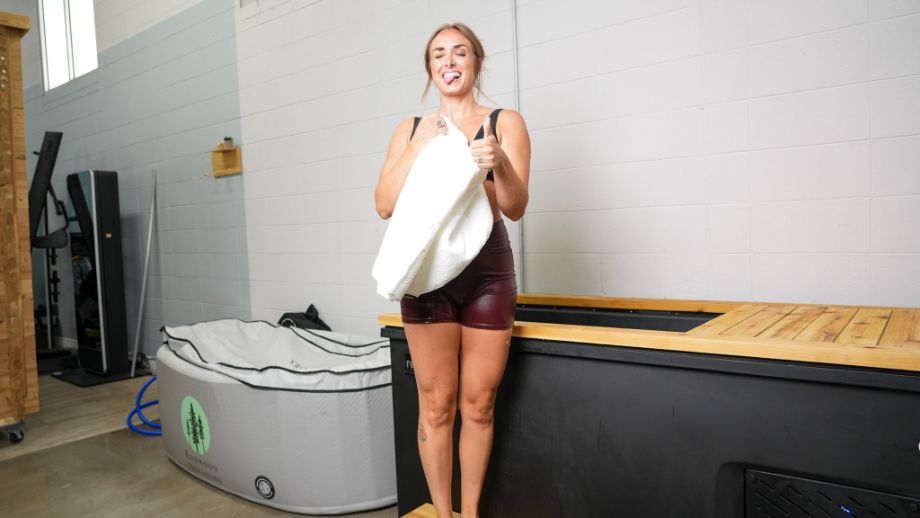
However, it’s worth noting that groundwater temperature changes throughout the year. Your tap water may not deliver 50-something-degree water in the middle of the summer. But this is relative to the ground temperature of your area and if you have water sourced from a public utility, deep well, or shallow well.
For example, I live in northern New England, and while it gets hot in the summer, it’s a short season, and the ground temperature doesn’t get as hot as it does in southern parts of the United States. My tap water is publicly sourced but stays rather cool all year round.
What is an Ice Bath?
Ice baths can be DIY setups at home in your bathtub or can be an outdoor tank with added ice, like one we talk about in our in-depth Ice Barrel review.
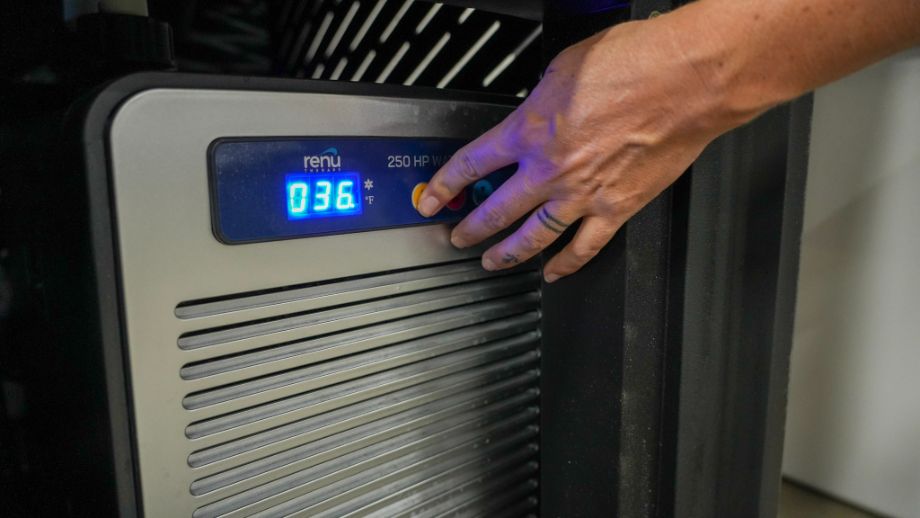
You can also purchase a cold plunge tub with a built-in chiller to regulate the water to your desired temperature. Some cold plunge tubs—like we discuss in the Renu Therapy Cold Stoic review—can bring water all the way down to a chilling 36 degrees Fahrenheit.
Either way, ice baths expose your entire body to cold water all at the same time. You’ll either be sitting upright or lying down in a reclined position, but in either case you’ll be fully submerged in frigid water.
Benefits of Ice Baths
Many professional and high-level athletes turn to ice baths and cold baths for post-workout recovery or faster muscle recovery. There are several other potential benefits that can benefit athletes and non-athletes alike.
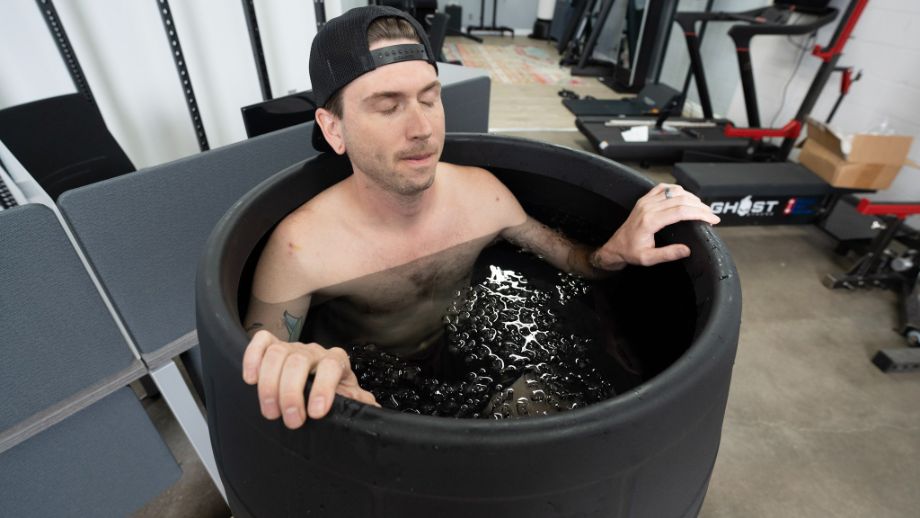
While research is still limited on the subject of cold water therapy and cryotherapy in general, here are some promising potential benefits:
- Voluntary cold water exposure can help reduce nerve sensation2 and reduce pain3 when paired with hyperventilation-style breathwork (like the Wim Hof Method).
- Cold water immersion can have benefits on your perception of muscle recovery4 and overall soreness.
- While more research is needed on ice baths and weight loss, there is a potential connection between ice baths and increased energy activity in brown fat tissues5, regulating glucose levels, insulin sensitivity, and lipid metabolism.
- When cold water immersion is paired with breathwork and meditation, studies have found it can activate your sympathetic nervous system6 which releases adrenaline and can help aid your body’s natural immune system response to fight infection.
- One study7 found that post-workout cold water therapy could aid in better sleep and overall well-being.
Potential Downsides to Ice Baths
While there is more than one reason to get on the ice bath train, we have a few things to keep in mind before you invest in a cold plunge tub.
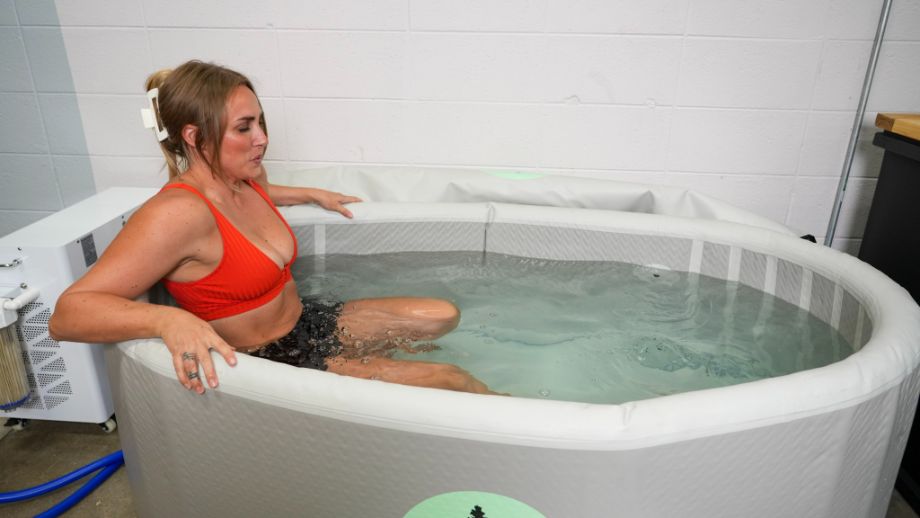
- Cold water immersion can help reduce your perception of muscle soreness, but there is still limited evidence8 supporting the fact it actually does. A 2018 Frontiers in Physiology9 study notes that massage is the most effective way to reduce inflammation related to DOMS (delayed onset muscle soreness).
- One study actually found that cold water therapy was more helpful for reducing muscle soreness after high-intensity workouts10 and not as effective for eccentric training like bodybuilding-style workouts.
- Cold plunge tubs are expensive, with many upwards of $5,000 if you want one with a chiller for temperature regulation.
- DIY cold tubs require frequent water changing and buying ice to create cold temperatures.
- Cold therapy can affect your heart rate, so it’s not recommended if you have a pre-existing heart condition like hypertension (high blood pressure).
Benefits of Cold Showers
While there are fewer studies that look at cold showers versus cold water immersion, one benefit is that cold showers can help you get used to cold water exposure and help get you ready for the benefits of full-body immersion.
That said, there are still benefits to turning your shower to a colder setting.
- Researchers found that in a study11 with participants free from major health conditions, 79% participants reported a reduction in sickness and absence of work and less anxiety over a 90-day period of self administered cold showers.
- In a Medical Hypothesis12 study published in 2008 researchers found that showers activate the sympathetic nervous system, increasing the release of endorphins and noradrenaline to the brain, which can have a positive effect on mental health and relieve depression symptoms.
- Cold showers could potentially help with your thermal comfort sensation13 by aiding faster heart rate recovery after a bout of intense exercise.
- You don’t need to make any extra purchases to start experimenting with cold showers today.
Potential Downsides to Cold Showers
- Showers don’t fully immerse you in water, which means your whole body is exposed to cold water all at the same time.
- You’ll have less control of the water temperature coming from your faucet than a cold plunge tub.
Ice Bath vs Cold Shower Final Thoughts
It’s worth mentioning again that cold water therapy has fairly limited research relating to direct health benefits. However, humans have been using cold water immersion and hot-cold therapy techniques for centuries.
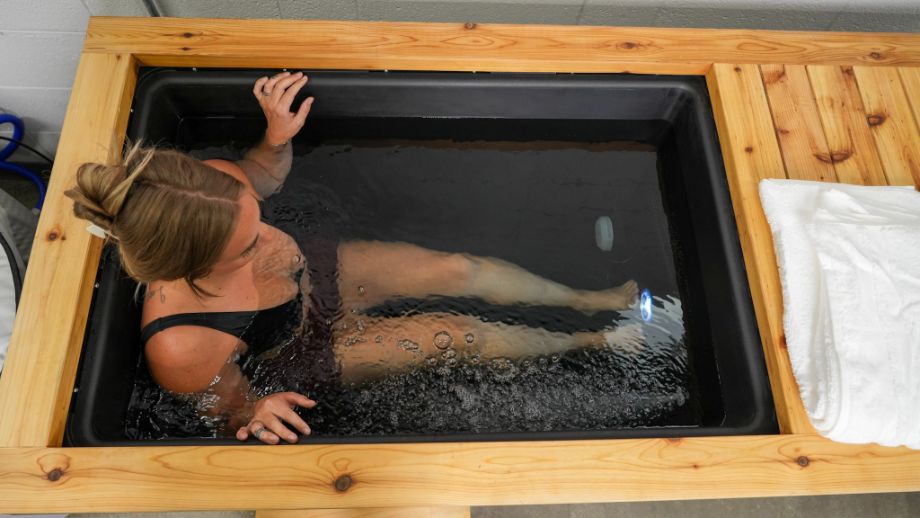
While cold showers are even less researched than ice baths, cold showers can be an ideal starting point if you’re new to cold exposure and want to experiment. Cold showers are also a good way to work up to full-body immersion, because a cold plunge can be quite shocking the first few times.
Overall, both cold water therapy techniques have potential benefits, including immune system support, workout recovery, and mental health benefits.
If you’re not ready to splurge on an ice bath, consider taking cold showers. Make sure it’s a concept you’re willing to get behind and make part of your routine before you drop $5,000 on something you may or may not use.
Ice Bath vs Cold Shower: FAQs
Is a cold shower as good as an ice bath?
While there are similarities in ice bath and cold shower benefits, there is more research supporting potential health benefits for ice baths. Overall, it’s still a new subject being searched more and more and cold showers have just been studied less.
What happens after 30 days of cold showers?
There is some evidence that shows longer periods of cold showers can support the immune system with similar results from cold plunge therapy and activate your sympathetic nervous system12.
Is it better to take a hot or cold shower after an ice bath?
In our guide on how to cold plunge, we discuss warming up slowly and resisting the urge to jump in a hot, steamy shower. You can wrap yourself in a towel or drink something warm to help the process.
How long of a cold shower for dopamine?
In a 2008 study12, participants gradually went from 2- to 5-minute showers to activate the sympathetic nervous system and reap the mental health benefits of cold showers.
References
- Esperland D, de Weerd L, Mercer JB. Health effects of voluntary exposure to cold water – a continuing subject of debate. Int J Circumpolar Health. 2022;81(1):2111789. doi:10.1080/22423982.2022.2111789
- Herrera E, Sandoval MC, Camargo DM, Salvini TF. Motor and sensory nerve conduction are affected differently by ice pack, ice massage, and cold water immersion. Phys Ther. 2010;90(4):581-591. doi:10.2522/ptj.20090131
- Zwaag J, Timmerman H, Pickkers P, Kox M. Modulation of Pain Sensitivity by a Hyperventilatory Breathing Exercise and Cold Exposure Training. J Pain Res. 2023;16:1979-1991.
- Stanley J, Buchheit M, Peake JM. The effect of post-exercise hydrotherapy on subsequent exercise performance and heart rate variability. Eur J Appl Physiol. 2012;112(3):951-961. doi:10.1007/s00421-011-2052-7
- Peres Valgas da Silva C, Hernández-Saavedra D, White JD, Stanford KI. Cold and Exercise: Therapeutic Tools to Activate Brown Adipose Tissue and Combat Obesity. Biology (Basel). 2019;8(1):9. Published 2019 Feb 12. doi:10.3390/biology8010009
- Kox M, van Eijk LT, Zwaag J, et al. Voluntary activation of the sympathetic nervous system and attenuation of the innate immune response in humans. Proc Natl Acad Sci U S A. 2014;111(20):7379-7384. doi:10.1073/pnas.1322174111
- Al Haddad H, Parouty J, Buchheit M. Effect of daily cold water immersion on heart rate variability and subjective ratings of well-being in highly trained swimmers. Int J Sports Physiol Perform. 2012;7(1):33-38. doi:10.1123/ijspp.7.1.33
- Stanley J, Buchheit M, Peake JM. The effect of post-exercise hydrotherapy on subsequent exercise performance and heart rate variability. Eur J Appl Physiol. 2012;112(3):951-961. doi:10.1007/s00421-011-2052-7
- Dupuy O, Douzi W, Theurot D, Bosquet L, Dugué B. An Evidence-Based Approach for Choosing Post-exercise Recovery Techniques to Reduce Markers of Muscle Damage, Soreness, Fatigue, and Inflammation: A Systematic Review With Meta-Analysis. Front Physiol. 2018;9:403. Published 2018 Apr 26. doi:10.3389/fphys.2018.00403
- Moore, E., Fuller, J.T., Buckley, J.D. et al. Impact of Cold-Water Immersion Compared with Passive Recovery Following a Single Bout of Strenuous Exercise on Athletic Performance in Physically Active Participants: A Systematic Review with Meta-analysis and Meta-regression. Sports Med 52, 1667–1688 (2022). https://doi.org/10.1007/s40279-022-01644-9
- Buijze GA, Sierevelt IN, van der Heijden BC, Dijkgraaf MG, Frings-Dresen MH. The Effect of Cold Showering on Health and Work: A Randomized Controlled Trial [published correction appears in PLoS One. 2018 Aug 2;13(8):e0201978]. PLoS One. 2016;11(9):e0161749. Published 2016 Sep 15. doi:10.1371/journal.pone.0161749
- Shevchuk NA. Adapted cold shower as a potential treatment for depression. Med Hypotheses. 2008;70(5):995-1001. doi:10.1016/j.mehy.2007.04.052
- Ajjimaporn A, Chaunchaiyakul R, Pitsamai S, Widjaja W. Effect of Cold Shower on Recovery From High-Intensity Cycling in the Heat. J Strength Cond Res. 2019;33(8):2233-2240. doi:10.1519/JSC.0000000000003017


